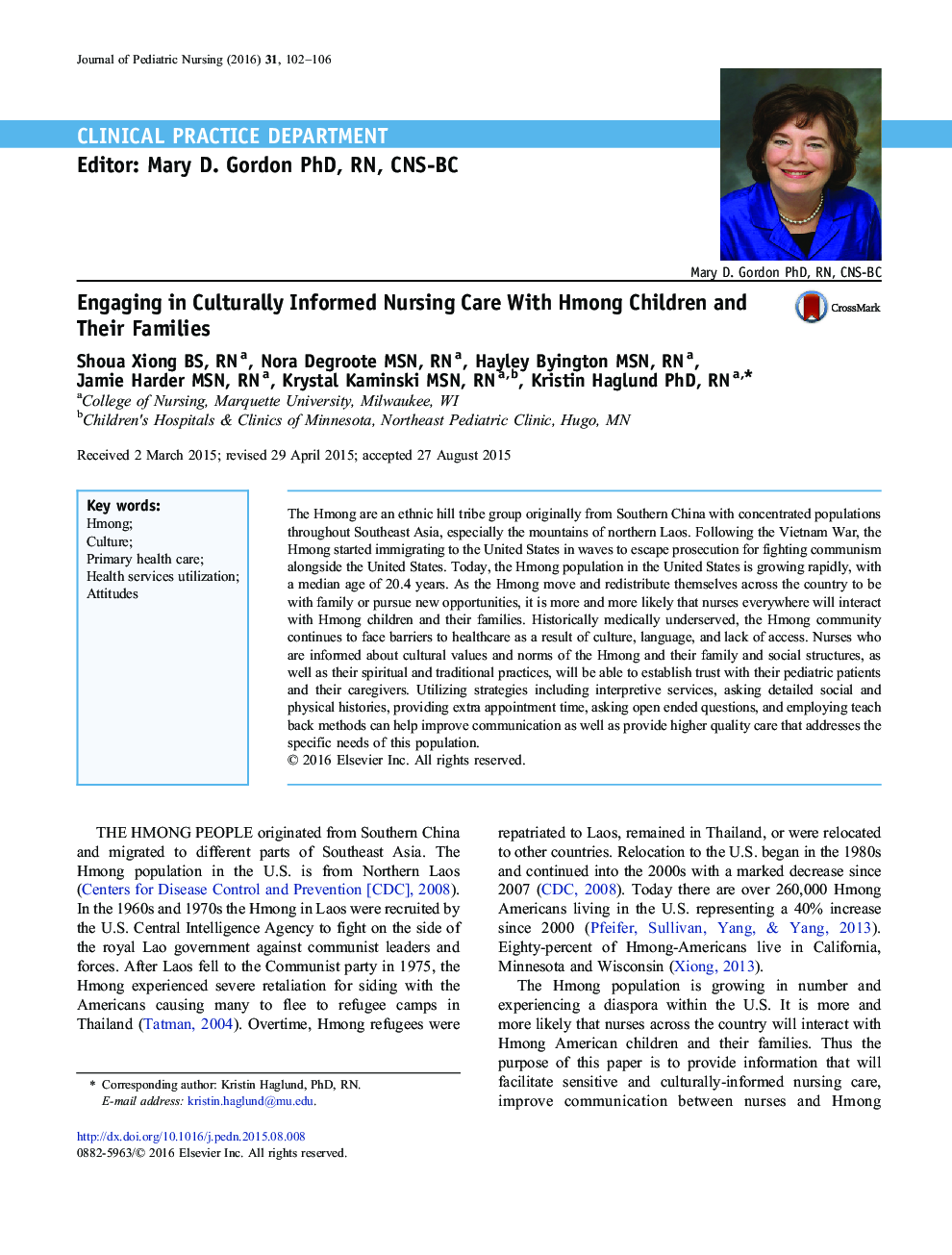| کد مقاله | کد نشریه | سال انتشار | مقاله انگلیسی | نسخه تمام متن |
|---|---|---|---|---|
| 2665593 | 1140705 | 2016 | 5 صفحه PDF | دانلود رایگان |
• The Hmong American population is growing in number and experiencing a diaspora within the U.S.
• Knowing salient aspects of Hmong culture provides nurses a place from which to start caring relationships.
• Aspects of Hmong culture influence how health is viewed and experienced.
• Cultural informed nursing care includes the acceptance and awareness of cultural differences among groups.
• Recognizing and respecting the importance of culture within many Hmong families is a step toward building a relationship.
The Hmong are an ethnic hill tribe group originally from Southern China with concentrated populations throughout Southeast Asia, especially the mountains of northern Laos. Following the Vietnam War, the Hmong started immigrating to the United States in waves to escape prosecution for fighting communism alongside the United States. Today, the Hmong population in the United States is growing rapidly, with a median age of 20.4 years. As the Hmong move and redistribute themselves across the country to be with family or pursue new opportunities, it is more and more likely that nurses everywhere will interact with Hmong children and their families. Historically medically underserved, the Hmong community continues to face barriers to healthcare as a result of culture, language, and lack of access. Nurses who are informed about cultural values and norms of the Hmong and their family and social structures, as well as their spiritual and traditional practices, will be able to establish trust with their pediatric patients and their caregivers. Utilizing strategies including interpretive services, asking detailed social and physical histories, providing extra appointment time, asking open ended questions, and employing teach back methods can help improve communication as well as provide higher quality care that addresses the specific needs of this population.
Journal: Journal of Pediatric Nursing - Volume 31, Issue 1, January–February 2016, Pages 102–106
